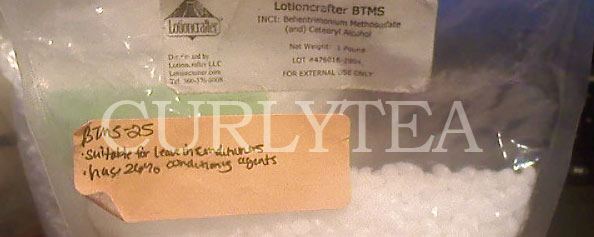
A visitor to Curlytea.com, Tiffany, posted a question on the BTMS ingredients page about using btms-50. For those who don’t already know, there are two types of BTMS.
BTMS-25 is a self-emulsifier and cationic conditioning ingredient which makes oil and water stay together. It forms a nice, conditioning cream which is safe to use even in leave-in conditioners.
BTMS-50 is behentrimonium methosulfate (and) cetyl alcohol (and) butylene glycol. BTMS-25 is Behentrimonium Methosulfate (and) Cetearyl Alcohol.
Join The Community!
Become a member to access all the formulas and recipes now!
What BTMS-25 has is 25% conditioner (behentrimonium methosulfate) and a 75% mix of thickener/moisturizer with cetyl+stearyl alcohols. It’s actually dispersible in hot water making it easy to use in “one pot” formulations.
BTMS-50 has 50% behentrimonium methosulfate, which in theory is supposed to make it more conditioning.
Tiffany got the BTMS-50 by accident, but was complaining that it left a white residue in her hair. She wanted to know whether she was using too much BTMS-50 or whether the BTMS-50 itself is the problem.
I haven’t used BTMS-50 before because the regular BTMS works so well. Feel free to comment at the end of this post to share your experiences with it.
My first question to her was what percentage of BTMS-50 did she use? If you’re making a leave-in conditioner, in 8 ounces, as little as 2tsp of BTMS-25 seems to get the job done. That’s about 3%.
BTMS-50 contains less fatty alcohols and more conditioning substance than BTMS-25 does. But I cannot tell you which one will be better for you or which one will feel better in your hair. That would depend too much on the other ingredients you’ve included in you DIY mix.
BTMS-25 doesn’t contain a built in petroleum based humectant like BTMS-50 does. I have no problem with that because I use additional humectants I like better anyway.
Either way, I have never had a problem with BTMS-25 in anything I use. Its the most stable emulsifier I’ve worked with so far regardless of pH or any additives I add.
And BTMS is one diverse ingredient! Its used to make leave-in conditioners, rinse-out conditioners, detanglers, moisturizing creams, cream rinses, skin lotions, skin creams, deep conditioners, and even deodorants/antiperspirants. If you don’t have a problem with silicones, it can also emulsifier silicone-heavy emulsions too.
My advice is to experiment with BTMS-50 by making 2 ounce testers with various percentages of BTMS50 until you find something which works well for you.
Maybe start with super, super simple emulsions measured in volume:
(2oz total)
| BTMS-50 | 2% | (0.04oz = about 1/4 teaspoon) |
| Water | 79% | (1.6oz) |
| Any oil | 18% | (0.36oz = about 2 teaspoons) |
| preservative | ~ 1% |
See where you are with this one. Is it too thick? Is it too watery? Is it perfect? If you like it, then you’ve found your basic formula.
Then test:
(2oz total)
| BTMS-50 | 4% | (0.08oz = about 1/2 teaspoon) |
| Water | 69% | (1.4oz) |
| Any oil | 26% | (0.5oz = 1TBSP) |
| preservative | ~1% |
See where you are with this one. Is it too thick? I it too watery? Is it perfect? If you like it, then you’ve found your basic formula.
BTMS-50 by itself may not be thick enough for you. So move on to testing it with Cetyl alcohol.
(2oz total)
| BTMS-50 | 2% | (0.04oz = about 1/4 teaspoon) |
| Cetyl alcohol | 1% | (0.02oz = about 1/8 teaspoon) |
| Water | 78% | (1.58oz… just use 1.5oz) |
| Any oil | 18% | (0.36oz = about 2 teaspoons) |
| preservative | ~1% |
Is it too thick? Is it too watery? Is it perfect? If you like it, then you’ve found your basic formula.
The best way for me to gauge what I like is by testing, testing, testing. And come at it with a plan so you won’t waste ingredients. Keep a scrap of paper and a pen next to you to write down what you just added AS YOU’RE DOING IT so the notes will be accurate.
Happy experimenting!
 CURLYTEA
CURLYTEA


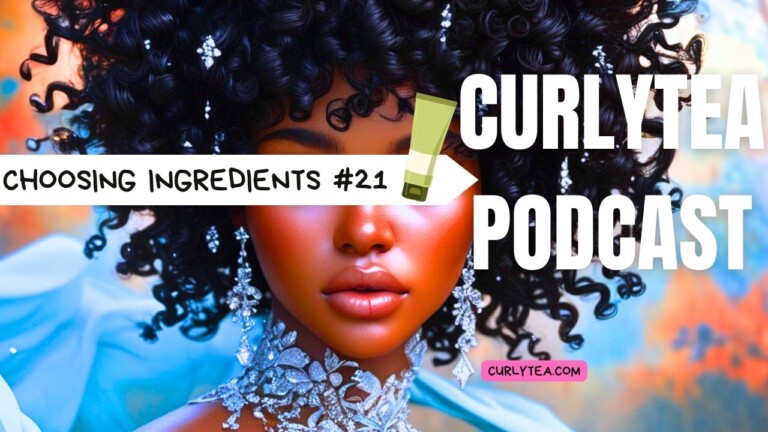
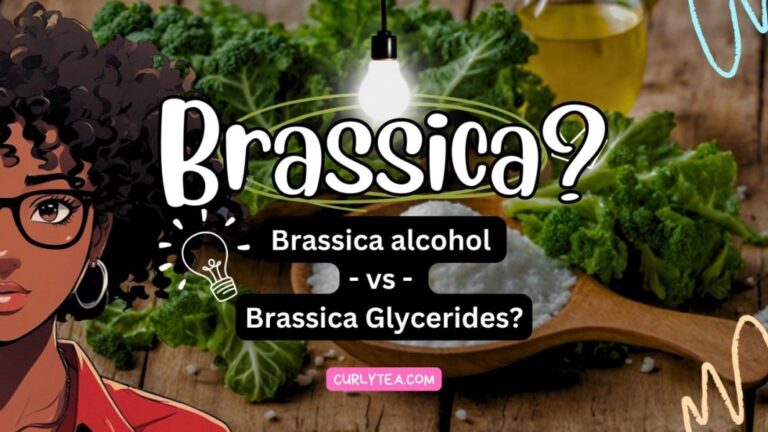
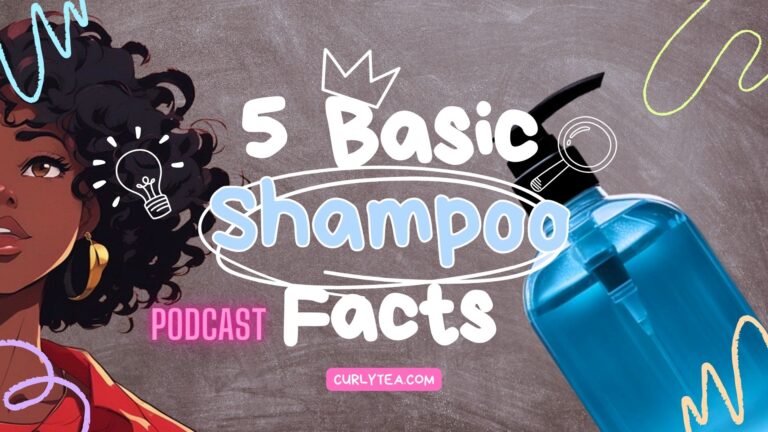
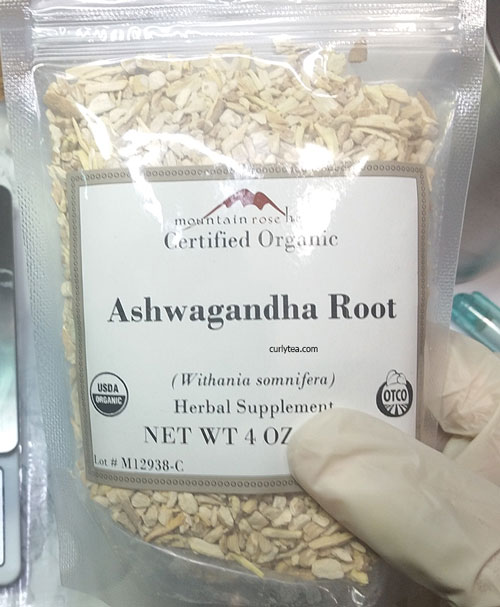
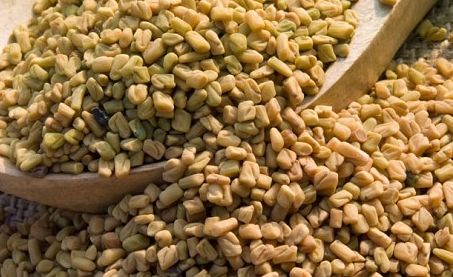
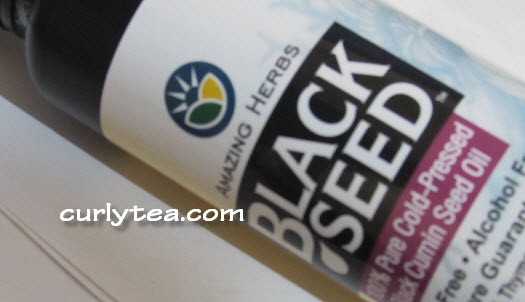
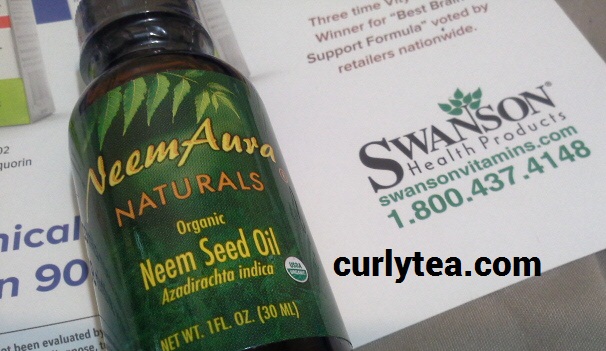
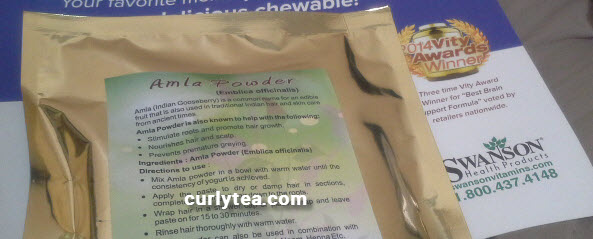
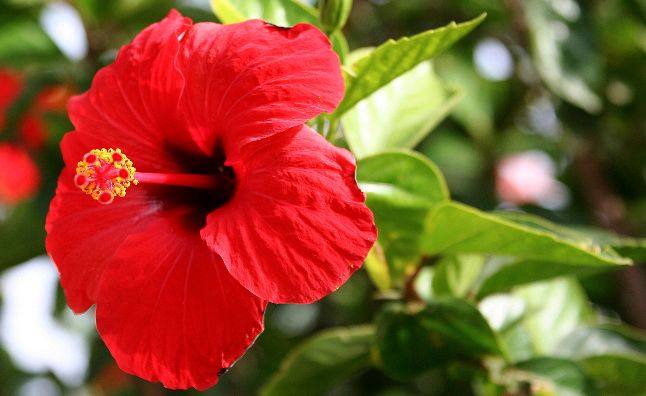
Hi there, that means I can still use your formulas above with BTMS25 it will just be less rich in a way, however if I added silk / wheat protein anyways, will still be good right?
Yes. You can still use BTMS-25, it’ll just feel a little less instantly “conditioning” in a way. 😀
Thxss for the advice!
Hello! Question: Can Cetyl alcohol be used with BTMS 225? I use BTMS 50 in my lotions and hair products, but they’re so much nicer with Cetyl alcohol. Lotions seem .. I don’t know, maybe fluffier? Lighter? Silkier? Something, but I really like what it contributes.
Yes. Cetyl alcohol can be used with BTMS-25. If you like what it adds to your mixes, you can use it. 😀
Can i use a butter to replace the Cetyl alcohol
Cetyl alcohol is a thickening ingredient. If you use butter as a replacement, you have to take into consideration whether the viscosity of your product will be affected by heat. Some harder butters are more heat resistant. But if you don’t want to worry about whether the product will turn more liquid in hotter weather, stick to using a traditional thickening ingredient (like cetyl alcohol, behenyl alcohol etc) that’s more resistant to temperature changes.
Hello can you give measurement s on how to use BTMS-25.
That depends on your recipe. For example, an 8oz jar is about 227 grams. I typically use 4% BTMS.
4% of 227 grams is 9.08 grams.
How do you come up with your percentages ? I am making hair products @ home from scratch using btms 25 and still do not know how to get the perfect percentages
when the product is made and the oil + water phase are mixed together at the top of the product it leaves a bubbly texture meaning it didn’t mix well and I am assuming its due to my math. please help. thank you.
If you’re having trouble mixing the water and oil phases, that usually means the temperatures are too different OR that the oils and waters aren’t hot enough. I usually heat ingredients for a full 25 minutes on low-medium heat if I’m heating them in glass containers. For stainless steel containers, you may be able to get away with 15 minutes of heating.
When it comes to BTMS (BTMS-25 and BTMS-50) I try to use no less than 4% of the total size. Over many years of testing, I’ve found that at least 4% of your total product size will work well.
First you must start off when how big a batch you want to make. Since I don’t manufacture products for sale, I usually make enough for myself or 1 or 2 relatives. For that, I stick to the regular 8 ounce size.
An 8 ounce product is about 227 grams. Let’s say you want to use BTMS-25 at 4%.
4% is 0.04. So 4% of 227 grams is:
0.04 x 227 = 9.08 grams
So for an 8 ounce batch of product, you’ll use AT LEAST 9.08 grams of BTMS-25 or BTMS-50.
For a 16 ounce batch of product, that’s about 454 grams.
4% is 0.04. So 4% of 454 grams is:
0.04 x 454 = 18.16 grams
So for a 16 ounce batch of product, you’ll use AT LEAST 18.16 grams of BTMS-25 or BTMS-50.
And so on.
I say “AT LEAST” because you may want to use 5% or 6% of BTMS. You can do that. Simply adjust the calculation.
5% is 0.05. So 5% of 227 grams is:
0.05 x 227 = 11.35 grams
For an 8 ounce product with 5% BTMS, you’ll add 11.35 grams of BTMS to the ingredients and melt.
If you want to use a higher percentage, adjust accordingly. I wouldn’t use over 6% of BTMS though. I don’t notice any improved conditioning at percentages higher than 6%, so it’s like wasting ingredients, in my opinion.
Hi, I feel blessed to have found this article! I’m trying my hand at DIY products! If I were to make a hair butter consisting of raw butters n carrier oils only, could I just use a Beeswax and not have to use an Emulsifier? Also, what percentage of the Beeswax should I use for my total batch?
If when using an Emulsifier like BTMS 25 for water/butter/oil hair products, could I add marshmallow root to my boiling water and strain it, of course so that it could be my thickener instead of using Cetyl alcoho?
Thank you for taking the time to read and answer my questions!
Hi! If you’re making an anhydrous (oils+butter only) mix, you don’t have to use an emulsifier. That’s fine. The product may feel heavy on the hair or skin though without any esters or other oil-soluble additives that help give a silkiness to your final butter. Try adding 3-5% Oliwax in place of some of your butters. Or try using 4% Caprylic Capric Triglycerides (CCT) in place of some of your oils? CCT helps make an anhydrous mix feel less ‘greasy’ and more ’emollient’.
If you want to mix water and oils, and keep them mixed, you must use an emulsifier. Just making sure you know but beeswax is not an emulsifier.
Marshmallow root will not thicken a cream the way a real thickener (like Cetyl alcohol) will. You don’t necessarily have to use cetyl alcohol either. There are many thickeners available. Instead of cetyl, you can use a 2nd emulsifier (like OliveM 1000 or Creammaker Moringa) to thicken the cream too.
You can also use a hard butter like Kokum butter to thicken. However, you may have to be careful of temperature changes if you’re using a hard butter to thicken anything. Butters have a temperature at which point they melt. So if your cream gets too hot it could lose viscosity (lose thickness).
If you don’t want to use a separate ingredient like cetyl alcohol as a thickener, increase the amount of BTMS. You can also use xanthan gum mixed with glycerin to thicken the mix. Xanthan gum, however, can give it a “stringy” consistency when you apply it to the hair.
Hello curlytea,
I read the article above. Thank you for the great information. However, I read that Xanthan Gum can be used to thicken a product however, can Xanthan Gum be used with BTMS which is a cationic product?
Thanks,
Elesa
I’ve read that there are different grades of Xanthan Gum. But generally, the answer is no. Xanthan gum and BTMS hate each other’s guts. lol! Some people say you’ll end up with white streaks all throughout your product. Regular Xanthan is said to be an anionic polymer while BTMS is cationic emulsifier.
Hi love your knowledge on this …can I use slippery elm in this conditioner or do you think silk wheat protein is better?
Regular slippery Elm is not a hydrolyzed protein. I don’t think I’ve heard of silk wheat protein, but I do know that hydrolyzed silk and hydrolyzed wheat are hair penetrating ingredients. Slippery elm is not. If your hair is protein sensitive, additional hydrolyzed proteins can make it feel hard. If your hair is high porosity and can use the extra help, use the hydrolyzed proteins.
First of all thank you so much for this article. You have helped me sooo much. I want to use either slippery elm or Flaxseed gel in my natural hair products for hold. Will the BTMS be good to use for extra moisture or does it not mix well with flaxseed gel and slippery elm gel? I will be using butters and oils as well as water. I don’t know of any other products to use for hold. Please help.
Hi! The problem with Flaxseed is it’s very hard to keep it from going bad, even with broad-spectrum preservatives. I’m not sure how much hold you’re going to get with Slippery Elm though. BTMS is a softening cationic emulsifier that shouldn’t give you any problems. The product I use for hold is the liquid Hairfix XH Maltodextrin (sold at makingcosmetics.com). But be careful. Too much of it can cause a very hard hold. I try to stay at or under 5% in a diy product.
Hello Curly Tea,
I want to make a curl custard for my hair. What do you suggest I use instead of flaxseed to have the custurd have a longer shelve life. I can only keep my flaxseed custard for 2 weeks with a perservative in it. Please help.
Thanks
I recently made a jiggly custard-like product with Bamboo. Check out that recipe and make changes for what you’re going for. It has a gel-like base.
https://www.curlytea.com/0908/abcd-bamboo-hair-jelly.html
Hi! Nice article! Let me ask you if you have ever made solid bars of hair conditioner and if so, which formula do you advice me to use? I’ve been trying several formulas and I can’t manage to get a creamy feeling while applying ir on my hair in the shower. Sometimes it doesn’t even seem to leave the bar and get on my hair. Could you help me? Thanks! (Sorry if my english is not the best, I’m not a native speaker)
Sorry. I haven’t formulated a solid hair conditioner. 🙁 But I would probably start with using BTMS-50 (cationic conditioner) and harder butters like Kokum butter and Cocoa butter to get it to be solid. Skip any type of water, of course. lol! To make sure it stays solid, you should also consider using waxy thickeners like Cetearyl alcohol or Cetyl alcohol. Make sure the thickener is nonionic to keep any problems from happening with the cationic BTMS. If you want to make it “slippier”, try to add silicone and propylene glycol alternative ingredients like NatraSil, Alkyl Esters, Ethylhexyl olivate or even Daikon seed extract. You can also add a tiny amount of liquid oils, but not too much. Sorry i couldn’t be of more help.
It’s nice to see someone else uses btms-50. I never tried the 25. I buy from the same suppliers I have seen you post here.
Lotioncrafter has a new btms-50 and I am having issues with my recipe separating. So I went back to Bramble Berry’s version.
Well, I ordered more BTMS-50 from brambleberry and guess what showed up? A more yellow BTMS-50. I hope this stuff lasts as good as white version.
Hi, I appreciate this blog, does btms have to be washed out? If I use btms-25 or btms-50 for a hair cream (daily moisturizer) would that be safe?
BTMS, both the 25 and the 50, are perfect for leave-in conditioning creams. You can choose to use them in conditioners designed to be rinsed off, but they are perfect to use in leave-in conditioners and moisturizers.
Hello! Does BTMS-25 or BTMS-50 provide hold in the hair at a certain percentage? If not, what are some good holding agents for creams?
BTMS is simply a conditioning agent. It, in and of itself, does not provide any hold. What I use to add hold to a product is Hairfix XH Maltodextrin. Look for an ingredient that is a “fixative polymer” if you want to add hold to a product. 😀
https://www.makingcosmetics.com/HairFix-XH-Maltodextrin_p_1049.html
Hi thank you for this blog. I was wondering how much Cetearyl alcohol you should use when using BTMS-25 for an 8 oz conditioner?
I used to use cetyl alcohol with BTMS. However, cetyl and cetearyl are often used for the same purpose. So you can start there.
8oz is about 227 grams.
You can start with 2% and see how you like it.
2% of 227 = (0.02 x 227) = 4.54 grams
So if you want to use Cetearyl alcohol at 2% in an 8 oz product: add 4.54 grams (or 0.16 oz) of cetearyl alcohol.
If you want to use cetearyl alcohol at 3% in an 8 oz product: add 6.81 grams (or 0.24 oz) of cetearyl alcohol.
etc
etc
Happy I came across this article, thanks for sharing your wealth of knowledge here. I want to try making a twist cream for my 4c hair, looking for more information on product formulation if you have any.
Again, this was really helpful.
Thanks
Can BTMS be add to store bought conditioner that doesn’t contain any?
I wouldn’t experiment with that, no. A finished product usually already has the ingredients that were to be added at a certain temperature, like fragrance, preservatives and heat-sensitive extracts. To add BTMS to an existing product you’d have to also heat the existing product so it won’t cause the BTMS to cease and turn into solid waxy lumps. BTMS should be heated to about 75-80 degrees celsius. If you also heat a finished, pre-existing conditioner to that temp, you could be rendering the preservative completely ineffective and zapping whatever good stuff was left in any extracts used. All of this to say, I wouldn’t ever risk trying to add BTMS into a store bought conditioner.
Hi, I don’t have any questions, I however would like commend you on how you take the time to respond to people’s questions. I have seen so many other bloggers with little or no responses which does not necessarily reflect negligence on their part….but Well Done Curlytea!!!
Does BTMS50 stabilize a product with a pH of 1.5
The formula consists of amino acids and glyoxylic acid that works on straightening curly hair
I want an emulsion that tolerates acids and is stable and stable, please help
Thanks
Sorry, I can’t help you with that. I don’t think BTMS works at such a low pH. Consult a cosmetic chemist for information about creating hair straighteners. We don’t create formulas to straighten curly hair here. Sorry.
thank you
Hi I was trying to make a leave in conditioner and was wondering if I could use SZ ctearyl alcohol and btms 25 or 50 with it? I love you article I came across and info is very much appreciated. Thanks so much!!
I haven’t used cetearyl alcohol in a conditioner yet. I tend to use cetyl alcohol when I do choose to use a fatty alcohol with it. But yes, you can use cetearyl alcohol with BTMS-25 or BTMS-50. Some people use it and cetyl alcohol interchangeably. It can be a co-emulsifier when used at 2%.
wow, thanks for quick response and info. I didn’t think I’d get a response. I’m definitely going to join curlytea. Thanks again!!
Hi, how do you heat up the water and oil phase? I’ve been research and a lot of people use a double hot burner. But I also see people use hot water to heat up the water and oil phase. Which is best?
Since I use stainless steel cups now, I place those cups in a shallow pan of water and heat to the specific temperature.
Thank you very much for the information and knowledge. So my question is, can we use cetyl alcohol with guar gum? Or does guar gum act as a thickner as well as emulsifier?
Guar gum and cetyl alcohol are different in how they thicken. Guar creates a very slippery, gel-like substance. Cetyl is a thickening fatty alcohol. I don’t think cetyl creates a gel. From my information, guar gum is not a good emulsifier at all. It just thickens. Cetyl alcohol is a very weak emulsifier and has to be used with another emulsifier to provide the best stability for an emulsion over time. Also to my knowledge, there is no known interactions between guar gum and cetyl alcohol. I also have to say that I don’t like to use regular guar gum as a leave-in on the hair because it tends to cause flakes.
Can BTMS 25 and BTMS 225 serve the same purpose in shampoo and conditioner bars? I’ve read that they are derived from different sources but are interchangeable. Is that true? Thanks!
Hi! BTMS-25 and BTMS-225 are basically the same thing. You’ll have to contact the manufacturer for information about how they manufacture whichever specific BTMS you want to use.
Shampoos: I wouldn’t use BTMS in a shampoo. If you want a cationic ingredient for shampoos, use Polyquat-7, Polyquat-10 or Cassia Hydroxypropyltrimonium Chloride. Save the BTMS for the conditioners and leave-ins.
Conditioner bars: I don’t make conditioner bars, but I’m sure it’ll work well in a shampoo bar along with your other thickeners. It’s not a finicky ingredient and tends to work well with everything but anionic ingredients.
BTMS-50: Based on my opinion, BTMS-50 feels even softer on the hair than BTMS-25. BTMS-50 has more of the conditioning agent and uses a different thickener than BTMS-25. But they’ll both work for conditioning purposes. BTMS-50, by itself, won’t add as much viscosity as BTMS-25, although they both thicken.